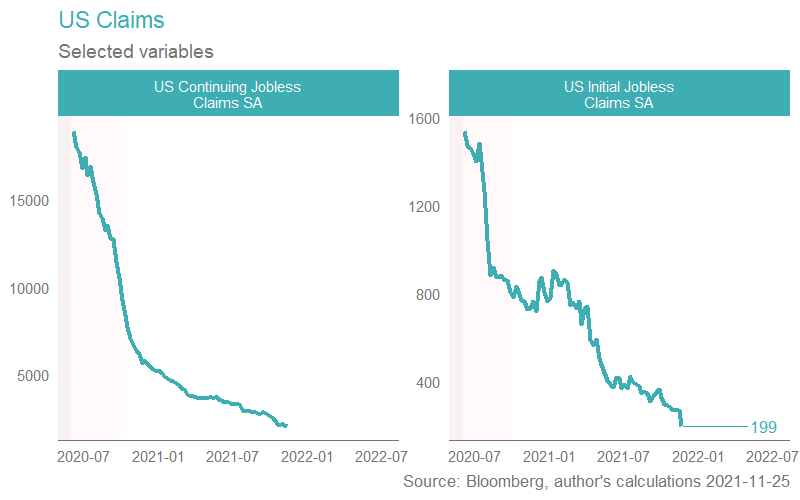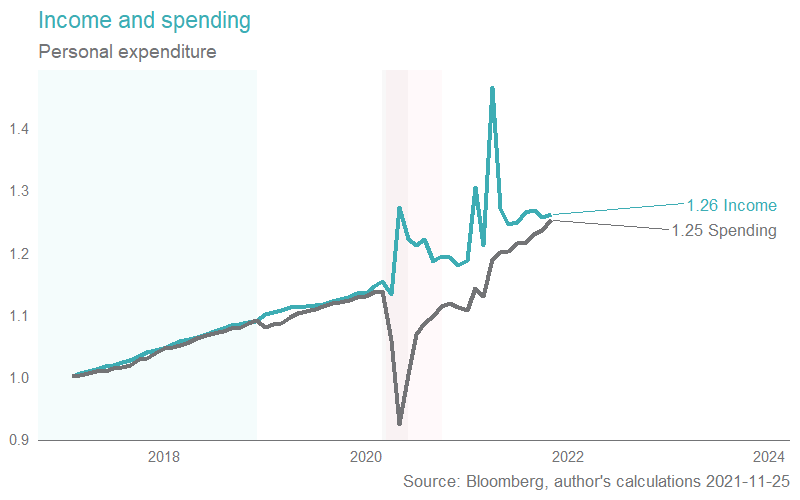Reading the tea leaves: the US data deluge overnight
We talk a lot about US monetary policy, because they are an economic superpower, and what they do affects asset classes everywhere.
We had jobless claims out overnight, which showed another material decline (meaning a good thing) with less people filing for initial and ongoing unemployment (199k actual, 260k consensus).

We also had personal income and expenditure data, which continued to grow, with both prints ahead of consensus.

New home sales remain very robust.
Housing (as UCLA economics professor Edward Leamer once put it) IS the business cycle, as such we watch it closely, as one of our DAA macro market timing devices.
Low treasury rates, low mortgage rates, and ongoing demand from millennials entering their prime homebuying years continues to buoy the market.

The estimated number of moves priced into the current forward-curve structure for the US continues to rise…

These are being influenced, in no small part, from Federal Reserve participants, such as Mary Daly, President of the San Francisco Fed, saying on Wednesday that she supports accelerating the pace of the taper.
A number of other Fed participants have made similar suggestions, which means the removal of monetary accommodation (tightening) at the margin.
Portfolio positioning
Higher rates are not necessarily a threat to the entire market.
But they are a threat to growth stocks. They derive much of their valuation from revenues and earnings many years out, which is where the sensitivity to rates comes from.
Value stocks, by comparison, are typically about near term earnings recoveries (e.g. to mid-cycle, or post some company specific issue) and by definition are not particularly sensitive to changes in the yield curve.
Some growth oriented sectors, like Information Technology, are trading at forward earnings multiples of over 90x.
Simple measures of Valuation spread, such as those depicted below, between the Russell Growth and Value indices, convey the idea behind factor "richening" well.

More broadly, this mix of red hot inflation data, strong income and spending data, robust labour markets, elevated housing activity, expensive asset pricing and concomitant very low rates cannot continue.
We think it more likely that rates are the “release value”, moving higher, restraining very strong demand, and in the interim, affecting stocks and sectors that are most sensitive to changes in their terminal multiple, which, to our mind, at the moment, includes consumer discretionary, health, and technology stocks, that fall under the banner of “growth”.
2 topics

